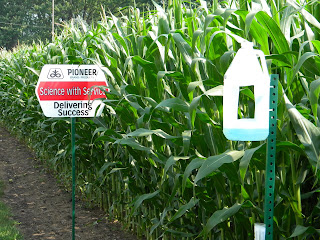Get ready for some big corn yields. Last year we had a cooler than average year. This year, warmer than average by approximately 300 heat units and very little stress. This gives full season, offensively minded high yielding hybrids a big advantage.
Early soybean yields have confirmed my earlier thoughts. I told our agronomist, Morris Sagriff a month ago that I have seen soybeans like this only once before. That was in central Illinois!
There have been a couple of confirmed reports of 70+ bushel soybeans, lots of 50-60 bu reports. I know one client that grew 50 bu natto beans. Tacking on the $4.00 premium makes potentially $700 per acre. WOW! Probably wise to keep some of that cash in reserve for next year.
Now for some hybrid specific predictions.
Reliable stay at home defenseman who can also quarterback the power play. Will never win a scoring title, but this veteran can make poor coaches look good.
This hybrid is our power forward pick. Big and rangy with great offensive skill. Good roots and stalks make up the defensive package.
New league scoring champion for 2010. Move aside, Sidney Crosby. This new hybrid also brings some defensive drought tolerance.
Second line centre. Will provide secondary scoring punch to P0118HR and replace 37Y14 family in the lineup.
Raw talent gives this rookie a chance to make lineup as defensive partner to 38M58. Showed real promise in 2009's shorter season.







.JPG)
.JPG)





.JPG)
.JPG)














.JPG)

.JPG)

















